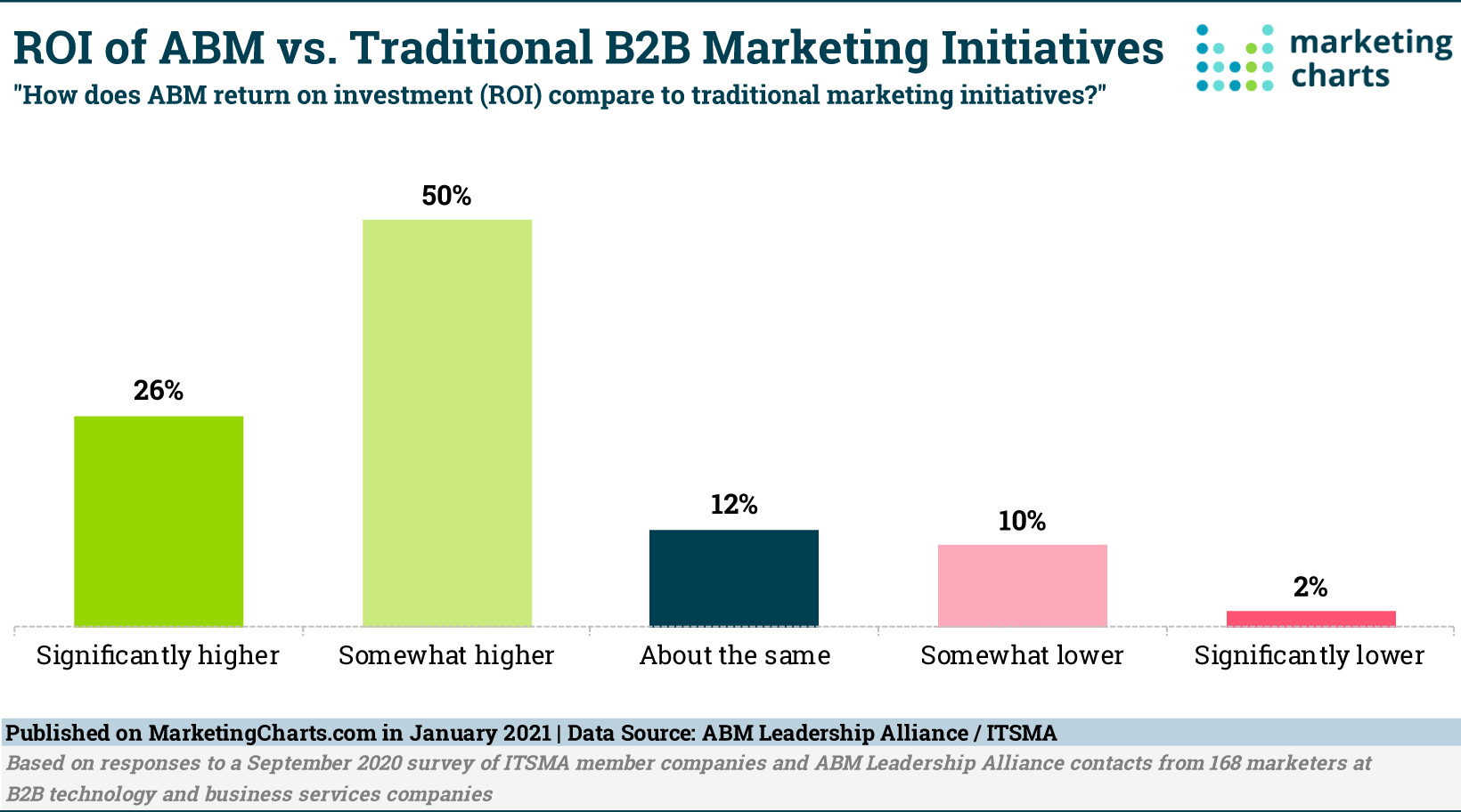12 account-based marketing tactics that work
Discover 12 account-based marketing tactics — including aligning your sales and marketing teams and personalizing content and the customer experience.

Account-based marketing is all about aligning your marketing and sales teams to personally engage highly targeted accounts. It’s gaining popularity in the B2B market, but it won't be successful unless you fully commit to the concept. Done right, account-based marketing can significantly improve your sales, profits and ROI. We've identified a dozen account-based marketing tactics guaranteed to make your efforts more successful.
Key takeaways
-
Account-based marketing involves marketing and sales teams working together to personally engage targeted accounts.
-
The three primary components of account-based marketing are targeting, engagement and measurement.
-
For account-based marketing success, you need to align your sales and marketing teams, analyze customer data for pinpoint targeting, and fully understand customer needs and expectations.
-
Other elements essential for success include personalized content and offers, targeted online advertising and retargeting, and using old-school methods like direct mail and personalized gifts.
What is account-based marketing?
Account-based marketing, or ABM, is an approach to B2B marketing that concentrates marketing and sales resources on a set of target accounts. ABM uses personalized campaigns to engage each account by focusing on that account's specific needs. It's all about moving beyond traditional broad-based marketing to personally engage the target account.
3 components of ABM
Account-based marketing consists of three primary components, all of which involve both the marketing and sales teams:
-
Targeting – identifying and focusing on core group accounts and decision-makers that can potentially deliver the most sales and highest ROI
-
Engagement – establishing a personal relationship with targeted accounts, across all relevant channels and media
-
Measurement – using detailed reports and real-time dashboards to analyze the performance of individual accounts, campaigns and programs
(The following video explains more about how account-based marketing works.)
Benefits of ABM
ABM isn't a new approach but is newly resurgent, thanks to evolving technology and recognized success. According to Terminus' The State of Modern Marketing report, executives say that ABM delivers:
-
More successful sales conversions
-
Improved account relationships
-
Better customer service
-
More efficient use of marketing budget
Equally important, 76% of B2B marketers say that ABM delivers higher ROI than traditional marketing initiatives. All of which explains why 70% of marketers now embrace account-based marketing in their businesses.

12 effective account-based marketing tactics
When implementing an account-based marketing strategy, there are several tactics you can use to improve your chances of success. Consider embracing some or all of these tactics to enhance your company's ABM activities.
-
Align your sales and marketing teams
One thing that distinguishes account-based marketing from traditional marketing is the relationship between your marketing and sales teams. With traditional marketing, the marketing team focuses its efforts on feeding leads to the sales team, who then picks up the baton and takes the deal to the close. With ABM, however, marketing and sales work together throughout the entire process to identify, engage and convert targeted customers. For ABM success, your marketing and sales team must be in total alignment.

-
Analyze data for pinpoint targeting
Account-based marketing depends on a detailed analysis of available customer data. Slice and dice your data to identify high-potential targets via a variety of characteristics, including:
-
industry
-
activity
-
size
-
maturity level
-
location
-
Analyze data to understand customer needs
ABM is all about establishing a personal relationship with targeted customers. To do this, you have to thoroughly analyze your customer data and data available from other sources to understand what specific customers need and expect. The only way to deliver a personalized experience is if you truly understand your customers.
-
Personalize your content marketing
Whatever type of content you deliver, you need to personalize that content to match its ideal customer profile. It doesn't matter what media you utilize—emails, blogs, webinars, eBooks, white papers or anything else — you have to personalize the content for each customer. Generalized content doesn't cut it in account-based marketing; you need to drill down to the specific information that your customers need.
-
Develop personalized offers
In addition to personalizing your content, you need to personalize the offers you provide to your targeted customers. This may include special pricing, personalized deals and packages, and even personalized products or services.
-
Personalize website landing pages
You might think that your website is a singular, generalized experience for all users. It doesn't have to be. You can provide your targeted customers with personalized landing pages with content specific to their interests. These account-specific pages can display custom copy, offers and other information — including the customer's name and logo — that specifically address the needs of targeted customers.
-
Use targeted online advertising
ABM eschews waste and inefficiency. Fortunately, it's easy and beneficial to target your marketing campaigns to specific audiences. Instead of plastering the Internet with generic ads, create ads specific to targeted groups or even individual businesses.
For example, LinkedIn makes it easy to for any ABM campaign to reach key personas in your target audience.
-
Embrace retargeting
Retargeting — the process of using cookies to serve your ads on other sites to customers who've previously visited your site — is an efficient and effective way to keep your brand in front of interested customers. You can even use retargeting to identify accounts you've targeted and serve them your message as they travel around the Internet.
-
Use customer testimonials
Targeted customers like to hear from others like them. Use testimonials and case studies from existing customers to sing your praises to similar target customers and, in doing so, prove your legitimacy.
-
Gifts go a long way
It's not very high tech, but plying targeted customers with physical gifts tends to get their attention and shorten the sales cycle. Make sure the gifts are personal—a bottle of a buyer's favorite wine, a right-sized windbreaker with your company's logo discretely displayed on the front and the like. That means getting to know these individuals well enough to make the gifts personal, of course, but the effort will pay dividends in terms of establishing a strong relationship.
-
Don't forget direct mail
With the current emphasis on social media, online advertising and email marketing, it's easy to forget about traditional direct postal mail. That would be a mistake. Direct mail can still make a big impact, especially as other companies shift to online-only marketing.
Many executives don't open their own email and don't dive deep into social media; they do, however, pay attention to the mail that comes across their desks. Just make sure the direct mail is highly personalized — and personally addressed to the proper individual — and you might be surprised at the results. Direct mail can complement your other marketing efforts and have a big impact on campaign performance.
-
Start small and scale
You don't have to abandon your current marketing efforts to embrace ABM. Many companies use a mix of ABM and traditional demand generation marketing. You can start your ABM strategy with a handful of key accounts and then scale up your efforts as you see success.
